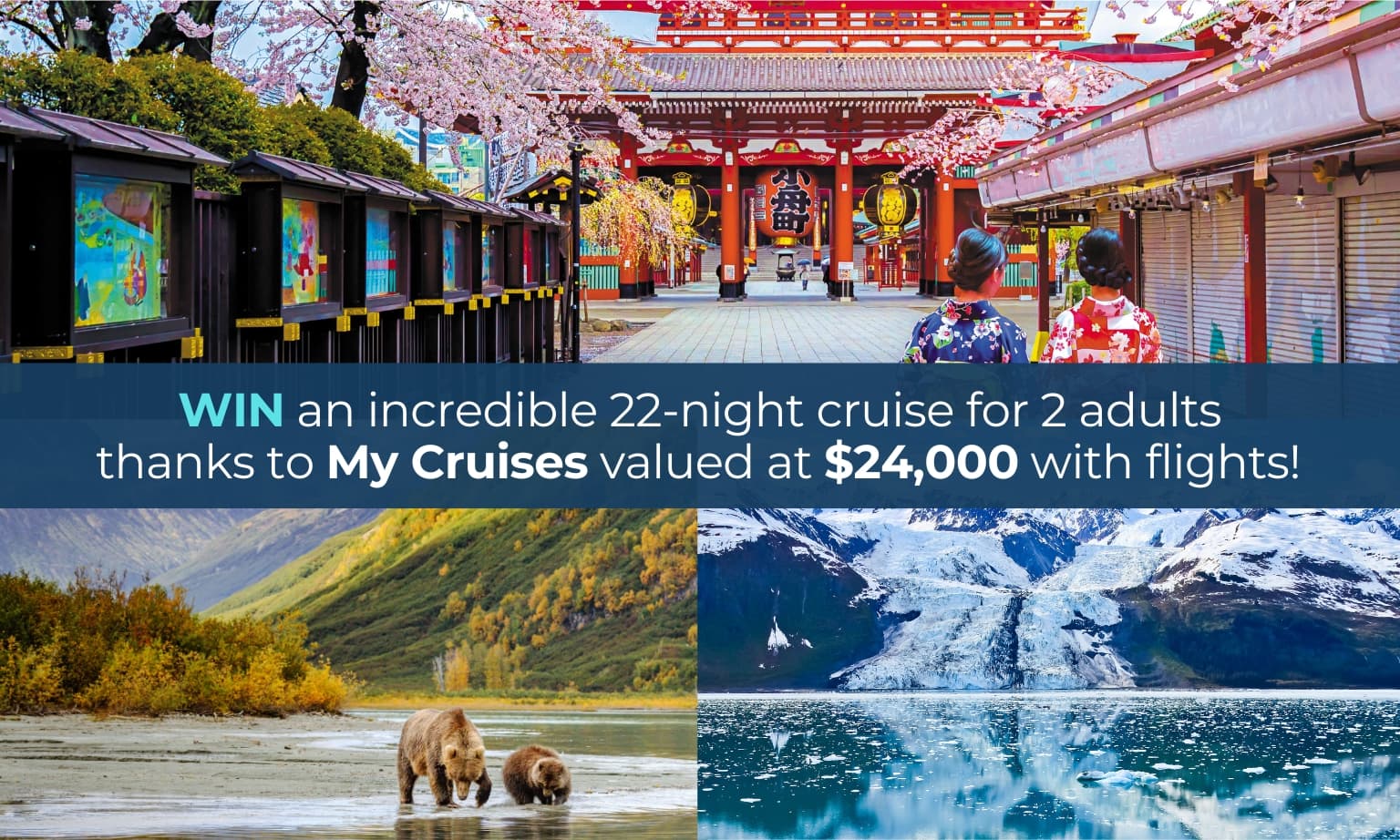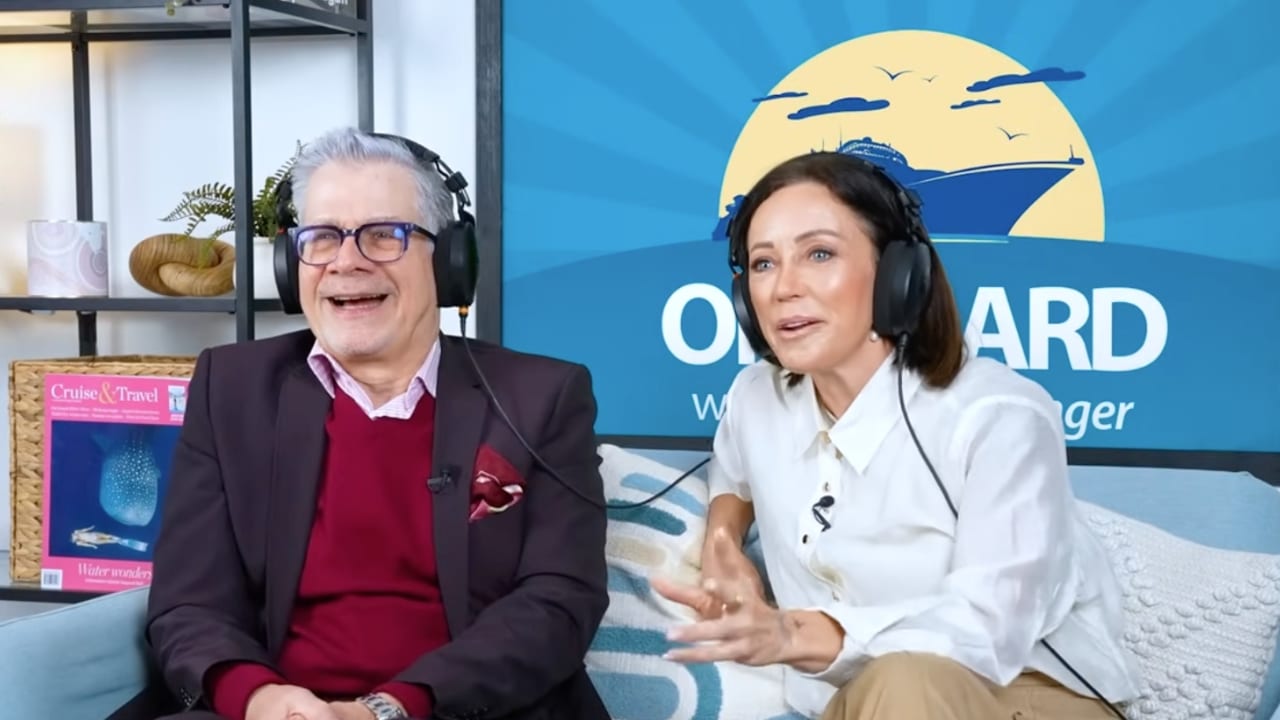Billboards across Sydney are celebrating that, when P&O Cruises merges with Carnival Australia next year, the cruise line’s legacy will live on.
“Same Line – same sweet memories” says the billboards.
But while the ships will carry design references to both brands, a Carnival Cruise in Australia is far more expensive than any P&O itinerary.
Depending on how long you’re looking to cruise for, currently a Carnival cruise costs between 30 – 90% more than a P&O cruise.
How much extra for a three-night cruise?

The average cost of an interior four-day cruise with Carnival in Australia is $682.65, which averages at $170 a day. Princes range from $619 to $854 for the quick getaway.
A ‘Classic Short Break’ with P&O is priced at $354.58, averaging at $88.5 a day. This represents a 92%, a significant increase for P&O cruisers who want to make the jump to Carnival.
For example, if a family is purchasing a three-night cruise for four people, they’ll be paying $327.92 extra per person, totalling $1311.70 extra per cruise.
Furthermore, P&O offers other three-night cruises such as Disco Glam from $358.72, a 90s short cruise from $356.65, Aussie Classic’s cruises from $358.72, Comedy Cruises from $328.72 and more, representing other cheaper options that may cease to exist.
It’s unclear which of P&O’s themed cruises will be carried over to Carnival.
P&O Australia was known as the nursery, where many cut their teeth on cruising at a very affordable rate. The change will allow Carnival Australia to charge a much more sensible market rate from the cruise line’s point of view – but will also disenfranchise a swath of Australian cruisers.
How much extra for a 10-night cruise?
While the rising prices for a slightly longer cruise are not as dramatic, the numbers are still significant. A 10-day Carnival Cruise currently averages at $1076.75, coming out to $107.67 a day, with starting prices ranging from $1019 up to $1359. Whereas P&O cruises 10-day offerings average out at $831.5, or $83.15 per day, starting at $679 and going up to $930. This represents a 29.4% price rise for those looking to jump ship from P&O to Carnival.
Many budget cruisers look for something below the magic line of $100 per day, the end of P&O cruises plus rising fares across the board could signal the end of cruise fares under a $100 per day in Australia.
For example, a family of four would have to pay an average of $981 extra in total if opting for a Carnival Cruise instead of a P&O cruise.
Profitability issues
All the industry talk when the announcement of P&O’s imminent fate was made contained the same key word: ‘profitability’. Since Covid many cruise lines have found themselves in a dog fight to make operations more profitable to stave off their debts incurred going the years of no-cruise activity.
P&O Australia Cruises being absorbed into Carnival not only allows for a raise in fares, but also for the Carnival brand to standardise their marketing, branding and logistics, allowing them to cut costs and increase their per-passenger profitability.
Also notable is that while P&O operates out of a range of ports, Carnival only sails out of Sydney and Melbourne. Through standardising itineraries the cruise line can save more money on fuel and logistical costs, such as supplier fees.
Furthermore, much has been made of the fact that Australia isn’t proving to be the most cost-effective destination for cruise lines, with high port fees, extensive government regulations and rising fuel costs all taking a toll.
Carnival Corp has been downsizing their operations across Australia, axing the Grand Princess and Pacific Explorer from its fleet, signaling its intention to scale back Australian operations.
Josh Weinstein, chief executive officer of Carnival Corporation & plc hinted at profitability as the reason for the absolving of the P&O brand.
“However, given the strategic reality of the South Pacific’s small population and significantly higher operating and regulatory costs, we’re adjusting our approach to give us the efficiencies we need to continue delivering an incredible cruise experience year-round to our guests in the region.”
It remains to be seen if operations will continue to scale back or if the corporation can find a way to start delivering more reliable profits in Australian waters. With Alaska and the Caribbean proving popular destinations for cruise ships at the moment, worries remain over how many ships will remain in Australia.









Add to the cost that people have to pay on Airlines tickets in order to fly to Sydney or Brisbane.
They say that Melbourne has too expensive fees, but actually cheaper that Sydney.
“Also notable is that while P&O operates out of a range of ports, Carnival only sails out of Sydney and Melbourne. Through standardising itineraries the cruise line can save more money on fuel and logistical costs, such as supplier fees.”
Ummmmm, journalist research? Carnival Luminosa out of BRISBANE for a lot of the year……
Cheap cruises are becoming a thing of the past, Carnival just dry docked the splendor, and now more food options, but these have to be paid for, whilst in the USA these dining options are free. I believe we are a being taken for a ride here in Aus, having to pay for items free on other ships in there fleet. Once P&O joins with carnival, I believe they will scale there ships here from 4 down to 2.
The P&O brand was the most affordable name under the Carnival umbrella that has a monopoly on the cruise industry based in Australia.After the pandemic the cruise company has changed they only focus on making up losses by cutting down maintenance and a quality cruise experience. Iam a life time cruiser having been cruising around the world and the things I like most about cruising is the quality of service, entertainment and itinerary experiences. Unfortunately the entertainment quality after the pandemic has decline the itenaries are the same and the food quality and choices are limited .The only great service comes from the crew of Philippino and Indonesian that provide an excellent hospitality experience. The Princess cruises still provide a great entertainment experience and the musicians are like no other always providing a great music in all their venues.I hope the cruise industry will focus on providing a great cruise service and a happy experience to make cruising affordable to all Australians
I seriously hope Carnival do NOT take the opportunity to jack up fares beyond any reasonable extent. The P & O model of pay for some activities once on board actually works for us and our family. Why factor in zip lines, bucking bulls, rope courses and Titanic Experiences when only a few on board want to partake.
Some changes are going to happen with luck for the better as we have sailed on Carnival and really enjoyed the experience. What we miss most on P & O is the availability of snacks into the evening or if late back from a day out. No point buying a full pizza when one or two slices will hold you over till dinner.
As for ports, I have written in our feedback from our recent PNG cruise on Encounter that it would be a massive mistake if Carnival cut visits to these wonderful Pacific and Asian ports that few others visit. It was an amazing trip to PNG which exceeded every expectation. Booked Singapore for 2026 and loving the idea of venturing further out to Tonga and Norfork at some stage. NO OTHER CRUISE line visits as many ports as P&O and this is one of its major attractions. Hoping Carnival gets this and keeps these ports and even expands not falling into the trap of just the 3 island weekly routines and a splash of NZ.
I also hope the insistence of washing hands entering dining facilities is strictly enforced from Carnival as PO staff are a bit slack on the “Washie Washie” as are MANY guests who seeming have no idea about hygiene!!
As for port fees and berths well that is by-in-large a Sydney and Melbourne issue. Brisbane has plenty of capacity and I cannot wait for the announcement from RC that Voyager will sail year round from Queensland. This will bring some welcome competition to the market.
Having sailed on both Pacific Adventure a month or so ago and now on revamped Carnival Splendor it’s clear to me that the Carnival brand in Australia is moving closer to P & O than the reverse. More options with a fee and less included. More solo guitarists and less bands. More Moreton Island stops (two hours there and you’ve seen everything). More swim & snorkel tender ports and less berthed habituated ports. Even though Carnival has always owned both, it’s now like they’ve removed a competitor so expect fares to go up and inclusions to go down. Blame the govts for their ridiculously overpriced port fees.
While the high port prices in Australia is an issue, never stand in the way of a state Government and a dollar, Cruise companies are taking a very short-term view of the market. Australians like to cruise and of all the markets in the world they are repeat cruisers. This is valuable as there is less need for expensive marketing.
The other issues that are not spoken about is the state of the world. Europe and the Mediterranean are both volatile (in a security sense) and are suffering from over tourism. While it looks good on Instagram, the reality of Europe is crowded, very crowded and with so many boats, you can’t escape the crowds.
Alaska has already hit peak cruise boat and is actively looking to limit the number of boats and tourists. The Caribbean is only cruise boats, overwhelming consumerism aimed at fleecing American tourists. It is hot and crowded and not very exciting.
Australia on the other hand is an underdeveloped market. It is a year-round market that currently is only really serviced as an afterthought or somewhere to put boats over winter.
If the governments really want to drive tourism, they need to stop just leaving it to chance and really look at the regulatory environment and the infrastructure to drive it.
Actually, Carnival also cruises out of Brisbane on the Luminosa.
P&O’s base fare may have been cheap, but the constant nickel and diming that went on made the final price closer to Carnival fares. Also the quality on P&O had been declining for quite a while – I’d pay more for a better experience.
And Carnival sail the Luminosa out of Brisbane.